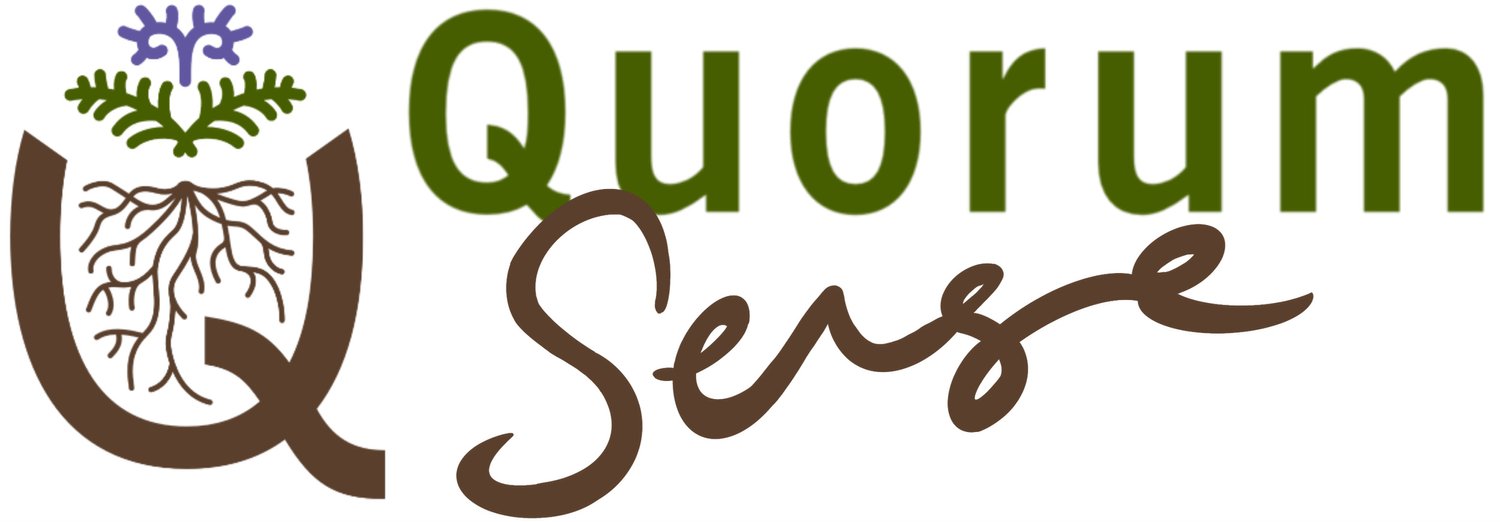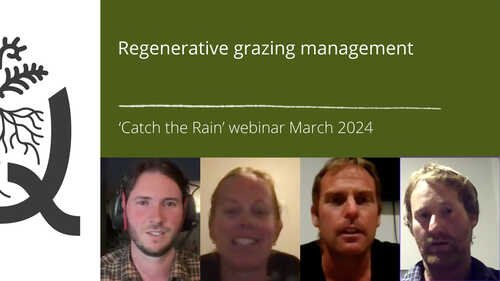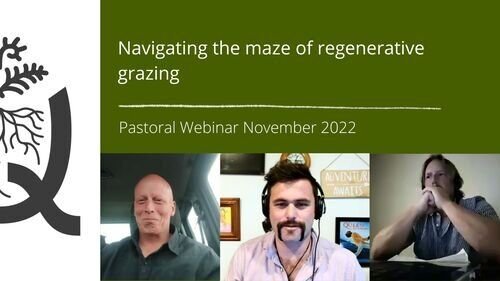The Bielskis journey to a high performance regenerative sheep system
Video description: From inspiration through a seven year journey of trial and evolution, the system at Rehoboth Farm is now proving itself in all conditions.
Video description: Hamish explains the challenges and approaches to creating the balance needed for both regeneration and performance.
In 2016 Hamish and Amy Bielski had a lightbulb moment after listening to Dr Christine Jones speak at their local hall. Seven years on they have tried, tested and evolved a range of grazing, cropping and pasture management approaches to discover what works best in their context. The result is a resilient, low input and profitable high performance sheep farm that has proven itself through three successive summer/autumn droughts.
In this case study, Hamish generously shares their journey, lessons, learnings and results which will be extremely valuable for any current or aspiring regenerative sheep farmer.
“Putting in diverse pastures, getting your grazing management right, your water right, your fencing right and your mentality right have been the most fundamental foundations for us to get right.”
Hamish Bielski, South Otago beef and sheep farmer
Links to previous case studies
Rehoboth Farm
Overview
Who: Hamish and Amy Bielski - Rehoboth Farm
Location: Clinton, South Otago
Farm details:
• 280ha effective of flat to rolling country with silt loam soils
• 600-900mm annual rainfall with a tendency for dry summers
• 80% sheep breeding/finishing 20% trade cattle
Goals
Work 5 hours a day
Pay off $100k/year debt
Build strong family with character and integrity
Grow the soil carbon sponge
Guiding principles
Limited soil disturbance
Minimal bare soil
Living plants growing
Diversity of plants
Higher density mob grazing
Reduce mobs, longer rotationsF
Management, Policies & Performance
Grazing management
Target rotation lengths:
Spring 15-25 days
Summer 40-55 days
Autumn 30-40 days
Winter 85-95 days
Target residuals:
Spring 1100-1200kgDM/ha
Summer/Autumn 1500kgDM/ha
Winter 1000kgDM/ha
Other key policies and practices
Closely match feed demand to supply
90% of lambs gone by the end of January
Nitrogen only used strategically to increase pasture growth following droughts
10-15ha kale/grass crop to ensure ewe lambs grow well
No fertiliser applied but soil fertility closely monitored
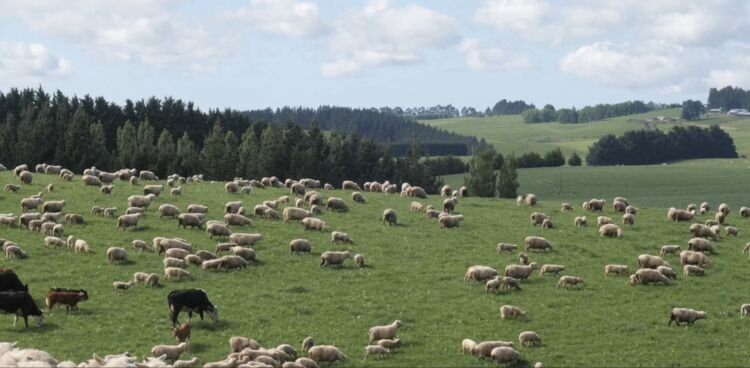
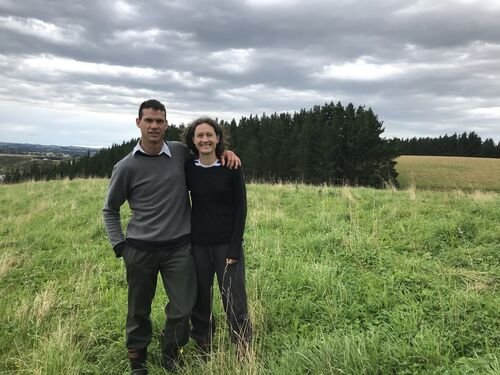
“We have to try and optimise our production not maximise it. Trying to maximise it causes a lot of heartache and a lot of input costs.”
Hamish Bielski beef and sheep farmer
Related content on: grazing management
Sam Lang is joined by guest farmers Dave Mitchell and Duncan Humm share how they (and other farmers) are successfully incorporating diverse forage crops into their farm systems.
Dean Martin’s adaptive grazing management is growing soil organic matter, deeper rooting plants and supporting a sheep-based system built around thriving soil.
Host Sam Lang and guest farmers Rhys Roberts (Align Farms) and Miah Smith explore techniques, successes and challenges bringing diverse pastures into NZ farming systems.
Hear from Mark Koopmans (North Canterbury), Jono Frew (Otago) and Russell Heald (Manawatu) as they discuss the practice of deferred grazing in New Zealand.
Hear from Mark Koopmans (North Canterbury), Rachel Short,(Taranaki) and Ross Johnson (Wairarapa) as they discuss regenerative grazing systems, techniques and farmer-led research.
Hawke's Bay's Michael Reilly and Taranaki's Rachel Short share their experiences with livestock collar technology. What role can it play in NZ farming systems? What are the opportunities and concerns?
Insights from four experienced livestock farmers who’ve developed their own unique regenerative approaches to regenerative livestock production.
The Bielski’s have tried, tested and evolved a high performance sheep grazing, cropping and pasture management system that's resilient, low input and profitable.
Five years in, Miah and Jenny Smith reflect on their regenerative dairying journey and the dramatic improvements in animal health, margins and their own quality of life.
Father and daughter duo Shane Birchall and Meghan Schutt share their learnings and experiences in transitioning to a self-sufficient, low waste dairy and beef farm operation.
South Otago's Pete Blair and Hawke's Bay's Michael Reilly compare experiences navigating the multi-faceted maze of regenerative grazing techniques in very different contexts.
Michael Reilly shares the ups and downs of his journey from Sydney suburbia to regenerative Hawkes Bay farmer, and what's changed along the way.
Improving livestock integration into cropping systems can bring a wide range of benefits and displace the need for increasingly expensive inputs.
In this Quorum Sense webinar we will be focusing on grazing management and planning in a New Zealand landscape.
Regenerative coach, pastoral farmer and market gardener Jules Matthews explores the challenges and opportunities within complexity, and the uncertainty it calls us to embrace.
This April 2021 webinar features four farmers panelist: Mark Anderson (Dairy), Rachel and Kenneth Short (Dairy)and Dean Martin (sheep and beef).
Pastoral farmer and grazing coach Siobhan Griffin shares her passion for regenerative pastoral farming, the opportunity to benefit farmers, consumers and our climate.
Regenerative farmer and grazing coach Siobhan Griffin talks about increasing soil organic matter, growing more grass, reducing costs and improving milk and cheese quality.
Mark Anderson's South Otago dairy farm has adopted a bale grazing wintering system that’s shown dramatic improvements for soil health and animal welfare.
Josh Bradfield farms on the rolling hills on the north of the Clutha River, adding diversity to his pasture, decreasing inputs and reducing tillage.
“Coming into farming on our own account without much experience meant we weren't tied to tradition and weren't afraid to try new things.”
This April 2021 webinar features four farmers panelist: Mark Anderson (Dairy), Rachel and Kenneth Short (Dairy)and Dean Martin (sheep and beef).
South Otago dairy farmers Mark and Madeline Anderson are on a pathway to lower inputs and improved soil health using regenerative principles.
This February 2021 webinar features four farmers: Jules Matthew (Sheep & Beef), Hamish Bielski (Sheep & Beef), Miah Smith (Dairy) and Mark Anderson (Dairy).
In this second episode, Hamish Bielski gives an insight to how his grazing management and recovery works and the advantages he has observed.
Ten years of higher grazing densities & longer recoveries have transformed Dean Martin’s previously unproductive pastures - ewes & lambs are now thriving on it!
South Otago sheep and beef farmers Amy and Hamish Bielski have spent four years using regenerative principles, focusing on adaptive, high density grazing management.
Hamish Bielski talks about his experience and advice for managing stocking rates, grazing densities, pasture growth and recovery periods post-drought.
South Otago sheep and beef farmer Hamish Bielski shares what he's learned over the last 3-4 years in creating a productive, profitable, and regenerating operation.
Disclaimer: The information, opinions and ideas presented in this content is for information purposes only and does not constitute professional advice. Any reliance on the content provided is done at your own risk. (click here to view full disclaimer).
